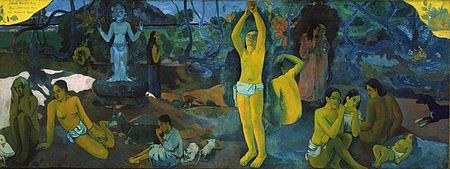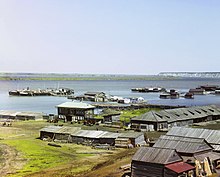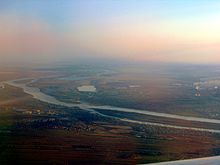Irtysh
| |||||||||||||||||||||||||||||||||||||||||||
Read other articles:

American football player (1937–1963) For the musician, see Don Fleming (musician). American football player Don FlemingFleming on a 1963 Topps cardNo. 46Position:SafetyPersonal informationBorn:(1937-06-11)June 11, 1937Bellaire, Ohio, U.S.Died:June 4, 1963(1963-06-04) (aged 25)Winter Park, Florida, U.S.Height:6 ft 0 in (1.83 m)Weight:188 lb (85 kg)Career informationHigh school:Shadyside (Shadyside, Ohio)College:FloridaNFL draft:1959 / Round: 28 / Pic…

This article needs attention from an expert in Hong Kong or Biographies. The specific problem is: Chinese literature, Hong Kong; please verify translations, esp of Chinese titles and of article itself. WikiProject Hong Kong or WikiProject Biographies may be able to help recruit an expert. (May 2017) Leung Ping-kwan, (Chinese: 梁秉鈞, 12 March 1949 – 5 January 2013[1]) whose pen name was Yesi (Chinese: 也斯),[2] was a Hong Kong poet, novelist, essayist, transla…

For related races, see 1900 United States gubernatorial elections. 1900 Florida gubernatorial election ← 1896 November 6, 1900 1904 → Nominee William Sherman Jennings Matthew B. MacFarlane Party Democratic Republican Popular vote 29,251 6,238 Percentage 80.98% 17.27% County Results Congressional District Result Jennings 50–60% 60–70% 70–80% 80–90% >90% Governor before election William D. Blox…

Stadium at Oslo, Norway Bislett Stadium (Bislett stadion)Lekegrinda (old stadium)LocationBislett0168 OsloOwnerOslo MunicipalityOperatorOslo MunicipalityCapacity15,400 (Athletics, football)SurfaceGrassConstructionBroke ground1917Opened1922Construction cost€55 Million (Euros)ArchitectC. F. Møller ArchitectsTenantsVålerenga Fotball (1944–1999)Skeid Fotball (2007–present)Lyn Fotball (2010, 2014-present) Bislett Stadium[1][2][3] (Norwegian: Bislett stadion) is a sports…

433 Eros 433 Eros adalah asteroid dekat-bumi pertama yang ditemukan. Nama asteroid ini dinamai dari dewa cinta Yunani, Eros (bahasa Yunani Ἔρως). 433 Eros ditemukan pada tanggal 13 Agustus 1898 oleh Carl Gustav Witt. Pranala luar NEAR Shoemaker spacecraft NEAR image of the day archive Movie: NEAR Shoemaker spacecraft landing The Eros Project (OrbDev's attempts at litigation over their property claim) Orbital simulation from JPL (Java) NEODys (saved output file) showing distance and magnitud…

South Yorkshire transport infrastructure Bus Rapid Transit NorthAn X1 bus on Blackburn Meadows Way shortly after openingFounded4 September 2016LocaleSouth YorkshireService typeBus rapid transitRoutes1DestinationsSheffieldRotherhamFleet22 Wright StreetDecksOperatorFirst South YorkshireWebsitewww.sypte.co.uk Bus Rapid Transit North is a bus rapid transit scheme introduced by the South Yorkshire Passenger Transport Executive in England. It consists of one route operated by First South Yorkshire bet…

American general, politician, railroader and businessman For the American tennis player, see Henry Slocum (tennis). Henry SlocumPortrait of General Henry W. Slocum by Mathew Brady, c. 1861Member of theU.S. House of Representativesfrom New YorkIn officeMarch 4, 1883 – March 3, 1885Preceded byLyman TremainSucceeded byAt-large district temporarily abolishedJohn FitzgibbonsElmer E. StudleyConstituencyat-large seatIn officeMarch 4, 1869 – March 3, 1873Preceded byWilliam E. Robin…

2003 studio album by Benevento/Russo DuoMy JackhammerStudio album by Benevento/Russo DuoReleasedJanuary 1, 2003Recorded2002GenreAcid Jazz, RockBenevento/Russo Duo chronology My Jackhammer(2003) Darts(2003) My Jackhammer is the debut album from the Benevento/Russo Duo, released in 2003 under their own production. Track listing Raindrops Whisper Words - 9:21 Sabia - 7:00 Improv I - 12:32 Seeup, Seedown - 4:22 Improv II - 10:11 My Jackhammer - 16:38 Curvedspace - 6:01 Impact - 6:29 Redbull …

Cet article possède un paronyme, voir Fougères. Feugères Le pressoir et l'église Saint-Pierre. Administration Pays France Région Normandie Département Manche Arrondissement Coutances Intercommunalité Communauté de communes Côte Ouest Centre Manche Maire Mandat Nicolas Jeanson 2020-2026 Code postal 50190 Code commune 50181 Démographie Populationmunicipale 345 hab. (2021 ) Densité 42 hab./km2 Géographie Coordonnées 49° 09′ 06″ nord, 1° 19′ 09…

Am I Actually the Strongest?Sampul novel ringan volume pertama実は俺、最強でした?(Jitsu wa Ore, Saikyō deshita?)GenreIsekai[1] MangaPengarangSai SumimoriPenerbitShōsetsuka ni NarōTerbit1 September 2018 – sekarang Novel ringanPengarangSai SumimoriIlustratorAi TakahashiPenerbitKodanshaPenerbit bahasa InggrisNA Kodansha USAImprintKodansha Ranobe BooksDemografiMaleTerbit31 Mei 2019 – sekarangVolume6 MangaPengarangSai SumimoriIlustratorAi TakahashiPenerbitKodanshaPenerbit baha…

Частина серії проФілософіяLeft to right: Plato, Kant, Nietzsche, Buddha, Confucius, AverroesПлатонКантНіцшеБуддаКонфуційАверроес Філософи Епістемологи Естетики Етики Логіки Метафізики Соціально-політичні філософи Традиції Аналітична Арістотелівська Африканська Близькосхідна іранська Буддійсь…

Historic road in New South Wales, Australia Cox's Road and Early Deviations - Mount York, Cox's Pass PrecinctLocationMount York Road (off), Mount Victoria, City of Blue Mountains, New South Wales, AustraliaCoordinates33°43′08″S 150°29′37″E / 33.7190°S 150.4935°E / -33.7190; 150.4935Built1814–ArchitectWilliam Cox New South Wales Heritage RegisterOfficial nameCox's Road and Early Deviations - Mount York, Cox's Pass Precinct; Old Bathurst Road; Bathurst Roa…

German venue You can help expand this article with text translated from the corresponding article in German. (April 2021) Click [show] for important translation instructions. View a machine-translated version of the German article. Machine translation, like DeepL or Google Translate, is a useful starting point for translations, but translators must revise errors as necessary and confirm that the translation is accurate, rather than simply copy-pasting machine-translated text into the Englis…

This article needs to be updated. Please help update this article to reflect recent events or newly available information. (June 2019) Line of servers by Lenovo ThinkServerDeveloperLenovoTypeDesktop (T###) orRack-mounted (R###) serverRelease date2008Discontinued2017PredecessorIBM eServer xSeriesSuccessorLenovo ThinkSystem ThinkSystem is a family of Intel servers from Lenovo. ThinkSystem products are designed to work with existing infrastructure and adapt to workloads. They are designed to provid…

Royal palace in Patiala , India Not to be confused with Qila Mubarak in Bathinda. Qila MubarakNative name Fort of Baba Ala SinghTypeRoyal palace of Patiala StateLocationPatiala, Punjab, India Qila Mubarak is a fortress of Sikh architecture in Patiala, Punjab, India.[1] History Mural painting of Maharaja Karam Singh in the Audience Hall of Qila Mubarak, Patiala Qila Mubarak was first built as a 'Kachigarhi' (Mud fortress) by Sidhu Jat ruler Baba Ala Singh in 1763,[2] who was the f…

Trutu Nettapus pulchellus Klasifikasi ilmiah Domain: Eukaryota Kerajaan: Animalia Filum: Chordata Kelas: Aves Ordo: Anseriformes Subordo: Anseres Superfamili: Anatoidea Famili: Anatidae Genus: NettapusBrandt, 1836 Spesies tipe Anas madagascariensis[1] = Anas auritaGmelin, 1789 Spesies Lihat teks Peta persebaran N. auritus N. c. coromandelianus N. c. albipennisauritus N.…

هذه المقالة يتيمة إذ تصل إليها مقالات أخرى قليلة جدًا. فضلًا، ساعد بإضافة وصلة إليها في مقالات متعلقة بها. (مايو 2020) نصب تذكاري لنساء الحرب العالمية الثانية تقديم البلد المملكة المتحدة مدينة مدينة وستمنستر إحداثيات 51°30′13″N 0°07′34″W / 51.5035°N 0.1262°W / 51.5035; -…

List of individual basketball actions performed in basketball This article needs additional citations for verification. Please help improve this article by adding citations to reliable sources. Unsourced material may be challenged and removed.Find sources: Basketball moves – news · newspapers · books · scholar · JSTOR (January 2007) (Learn how and when to remove this message) Basketball moves are generally individual actions used by players in basketball …

Nongshim Cup 23ª edizione Competizione Nongshim Cup Sport Go Edizione 23ª Organizzatore Nongshim e Hanguk Kiwon Date dall'11 ottobre 2021al 26 febbraio 2022 Luogo la competizione si è disputata online Partecipanti 3 squadre da 5 goisti Nazioni Corea del Sud, Repubblica Popolare Cinese, Giappone Formula torneo a squadre, chi vince continua Risultati Vincitore Corea del Sud (6–4)(14º titolo) Secondo Giappone (5–5) Terzo Cina (3–5) Cronologia della competizione 22ª …

Top division men's association football league in Andorra Football leaguePrimera DivisióFounded1995CountryAndorraConfederationUEFANumber of teams10Level on pyramid1Relegation toSegona DivisióDomestic cup(s)Copa ConstitucióSupercopa AndorranaInternational cup(s)UEFA Champions LeagueUEFA Europa Conference LeagueCurrent championsUE Santa Coloma (1st title) (2023–24)Most championshipsFC Santa Coloma (13 titles)Websitewww.faf.adCurrent: 2023–24 Primera Divisió The Primera Divisió (First…








